|
Five years is a long time in the annals of a nation.
In five years, between 2004 May and now, India has been through a lot. It has scaled Himalayan highs, and hit abysmal lows. It has witnessed tearful joys of victory, and the pain of tearing attacks. It has stood calm, yet been in turmoil. In those five years, India has danced as Sachin Tendulkar cut Brian Lara out of the record books, yet shook when his beloved Mumbai lay scarred, burnt and bruised. In that momentous span that might five years later seem just like a blip on the radar of time, Chandrayaan-1 flew unfettered into lunar orbit to bring us more on the moon, while Abhinav Bindra shot gloriously into golden Olympic fame. Between then and now, India built a billion dollar home and the world’s cheapest car, millions got new jobs, but several more millions couldn’t find any. Wi-fi and brain-gain became in, and India turned, after China, the world’s largest market for i-pods and a drink called Curacao. In those five years Indian talent brought Booker and Oscar awards home, while some notable authors, and musicians passed away, almost unsung. Every morning Yogis breathed new life into India, yet periodically mindless butchers tore its peace away.
Now, five years later, India is poised yet again, at the doorsteps of the electorate, waiting its final verdict one more time. It is time to choose our leaders yet once more. National politics has returned to dominate the Indian mindscape, after so much of everything else did in the past five years. India now waits as Manmohan Singh and L.K. Advani war with words, but send messages of love to their voters, most of whom are less than half their age. India watches as men and women like Nitish Kumar, Mulayam Singh, Sharad Pawar, Naveen Patnaik, Lalu Yadav, Mayawati, Jayalalitha, Mamta Banerjee wait in the wings and dare India’s national political parties to embrace power without them. Surely some other men and women like Rajnath Singh and Sonia Gandhi couldn’t be sleeping easy.
Welcome to the other IPL (Indian Political League), that is acerbic, antagonistic, even anachronistic, all at the same time. Does L.K. Advani fit in with the i-pod? Apparently he does, given that half his campaign is being run not out of open-top trucks but on a lively website. Whether change will come to India, we cannot tell, neither can any poll pundit, yet what is unfolding is quite gripping. Almost as though inside a great Roman coliseum, India’s leaders are at war, while those that will shape their political destiny are watching their every move, intently.
Five years is a long time, especially when it is your last chance to set the coliseum ablaze.
FINGERS CROSSED
Even as the big guns of Indian politics prepare for a gruelling final round in the polls, there are several regional players who could steal their thunder and become
kingmaker
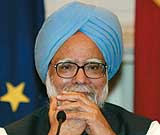
Manmohan Singh,
Congress |
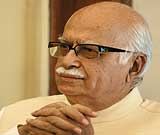
Lal Krishna Advani,
BJP |
By P.K. Chakravarty
The two main coalitions — the Indian National Congress that leads the United Progressive Alliance ruling coalition Government, and the Bharatiya Janata Party-led National Democratic Alliance — both seem to lack the sway required to win a majority in the 543-seat Parliament on their own. In the previous few elections, a so-called Third Front, comprising of India’s communist parties and some regional parties — each influential in a particular state but of little significance outside — provided an alternative to the two main national parties.
This time, there is also a “Fourth Front,” consisting of three regional parties with a stronghold in two large and populous north Indian states: Uttar Pradesh and Bihar. Two of those parties are headed by ministers in the ruling UPA coalition Government. If that’s not enough to get one’s head spinning, there’s more: currently, the UPA is fielding Prime Minister Manmohan Singh as the next PM candidate, but it is commonly believed that the real seat of power lies with Congress party chief Sonia Gandhi, the Italy-born wife and daughter-in-law of former Indian prime ministers.
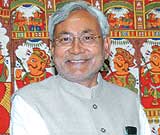
Nitish Kumar, Janta Dal(U)
The development minded CM of Bihar could emerge as the king maker as he is acceptable to all Dalit and upper caste leaders, including Paswan. Also, the minorities
feel safe under him and the state has an improved climate of security |
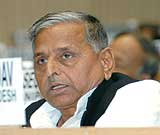
Mulayam Singh, Samajawadi Party
He’s been branded Mullah Mulayam by the right, and indeed he once had a lock on the minority-Yadav vote but of late he’s been struggling to get some traction in Uttar Pradesh which is likely to once a gain have a four-cornered fight |
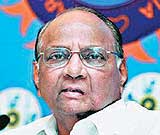
Sharad Pawar, NCP
Sitting on the fence. As the seat sharing issue with the Congress drags on, the NCP boss is showing a clear tilt towards the Shiv Sena, openly praising Sena boss Bal Thackeray but at the same time denies undercutting the Congress |
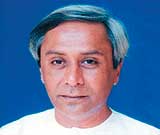
Naveen Patnaik, BJD
While Naveen has bragging rights to the Patnaik brand, the BJD’s decision to join hands with some constituents of the Third Front could hurt him, especially as the BJP has promised to make a horrible example of him
for the betrayal |
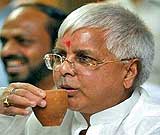
Lalu Yadav, RJD
His poll-eve dumping of the UPA and his alliance with Ram Vilas Paswan’s LJP shocked and awed the Congress but just as he thought it was all downhill, Mulayam’s Singh’s SP entered the fray in his home turf Bihar |
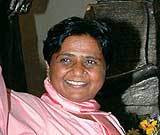
Mayawati, Bahujan Samaj Party
Prime Ministerial ambitions aside the BSP chief is slowly acquiring a pan-India presence, but her biggest drawback is that she is not acceptable to other senior Dalit leaders like Paswan and Athwale. Also, the Taj case can come back to haunt |
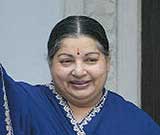
Jayalalitha, AIADMK
If the front headed by Jayalalithaa sweeps Tamil Nadu then she will have a big say in deciding who takes Delhi, but if the DMK goes back to the NDA for survival, it’s going to be an even battle for the 39 Lok Sabha seats |
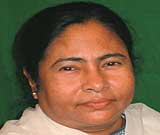
Mamata Banerjee, Trinamool
Mamata is not as unpredictable as Mayawati and has not hesitated in sharing power with the Congress and the BJP. She is going alone in these elections although the Left leaders claim that she is with the Third Front. |
|
On the other hand, octogenarian former home minister
L.K. Advani is seen as the prime ministerial candidate for the
NDA. The so-called third and fourth fronts will likely be kingmakers following the election results, and they will be the key to who forms the next Government, who will be the PM, and who will be part of the Cabinet. The decision will undoubtedly depend on which faction gets a chunk of Parliament seats, even it if isn’t necessarily the largest chunk.
In a nutshell, it’s almost impossible for anyone to confidently predict which party will come to power, or who’ll be the next PM. However, political analysts are speculating which parties can extend support to the largest party or combinations of parties in the 15th Lok
Sabha. Although senior Congress leader and Minister for External Affairs Panab Mukherjee is likely to play a prominent role in making an effort to bring the Congress and the Left Parties closer, he is likely to be unsuccessful if one studies the recent statements issued by
CPI(M) general secretary Prakash Karat, his CPI counterpart
A.B. Bardhan and other Left leaders who have vowed to strengthen the Third Front to keep equal distance from the Congress and the
BJP. They have not hidden their contempt for the economic and foreign policies being followed by the UPA Government which now remains on paper.
On the other hand, the BJP seems to be successful in forging electoral alliances even after the BJD headed by Navin Patnaik left the BJP in the lurch in
Orissa. The Congress was gleeful after Patnaik left his 11-year-old ally following differences on sharing of Lok Sabha and assembly seats and predicted BJP’s doom in
Orissa. But if media reports are to be believed it may not be a smooth sailing for him this time. It is also a fact that his party is expected to win some more seats than in the previous elections. But what will Mr Clean do after the elections? He is unlikely to extend support to the Congress which is his political rival in the state.
Apart from Patnaik’s BJD, which are the other parties likely to perform better in the elections? Among these are Trinamool Congress headed by Mamata Banerjee in West Bengal, Asom Gana Parishad of Assam, AIADMK headed by J. Jayalalithaa in Tamil
Nadu, BSP led by Uttar Pradesh Chief Minister
Mayawati, Nationalist Congress Party (NCP), PMK ,MDMK and United Janata Dal (U) which is part and parcel of the
NDA.
According to the latest calculations while the alliance led by Jayalalithaa is expected to bag 32 out of 39 LS seats in Tamil
Nadu. The Trinamool Congress 13 of the 42 seats in West Bengal, BSP 32 of 80 seats in Uttar
Pradesh, JD(U) 17 of the 40 seats in Bihar and NCP will win 10 out of 48 seats in
Maharashtra.
Seeing through the political haze, poll pundits see Bihar Chief Minister Nitish Kumar emerging as the king maker. Though there is dissension in the
JD(U) over allotment of seats, the mantle is likely to fall on the 58-year-old
Nitish. The development minded boss of Bihar is acceptable to all Dalit and upper caste leaders including Ram Vilas
Paswan. Though Lalu Prasad’s RJD and Paswan’s LJP are contesting elections together, Paswan is on friendlier terms with Nitish than
Lalu.
Also, the Bihar administration by and large remains corruption free under the
JD(U) and minorities seem to be happy with him. Therefore, speculation continues in political circles that Nitish will emerge as the king maker after the elections as the
UPA, NDA and the Third Front will not be able to win the magic figure of 274 in Lok
Sabha.
The normally taciturn Nitish has given a hint of things to come in the days ahead. Speaking of party hopping he said recently, “During elections such things happen. Party hopping is now a global phenomenon.” According to the Chief Minister, in every election as many as 10 per cent of politicians are eliminated and 10 per cent new faces come up. He said across the country there are 6,000 to 8,000 active politicians who take part in elections. And many of them are expected to change sides.
Nitish is likely to be a key player because Bihar has been one of the most colourful states in India’s electoral history, an intriguing case study in caste politics and a crucial swing state in most General Elections. This year too, the politics in the state promises to play a key role in the change of guard at the
Centre. The key battle in Bihar will be between the JD(U)-BJP combine and the newly-forged RJD-LJP alliance.
Nitish has much to prove in these elections. It’s an opportunity for him to emerge as the dominant leader in Bihar. He must show that for all his high ratings and good reviews, he can deliver goods consistently and over a period of time. Nitish has quietly risen the ranks in the NDA and has yet kept the BJP firmly on the sidelines in the state, becoming a force to reckon with in the caste-dependent state.
For now, Nitish says he is firmly behind the NDA. “There is no question of any alliance with the Congress. As far as the
JD(U) is concerned, we do not think of either the Third Front or any other option. We have only one option. We are with
NDA,” Nitish says. “If people vote NDA to power, a government led by Advaniji will be formed. If this does not happen, we will respect peoples’ verdict.”
As for Trinamool Congress is concerned, it will remain an ally of the Congress as long as it does not have any truck with the
CPI(M). The moment Congress allows the CPI(M) to join hands with it, the Trinamool will not hesitate a moment to break ties with the Congress.
But Mamata Banerjee is not as unpredictable as BSP leader Mayawati who nourishes the ambition to become Prime Minister and has not hesitated in sharing power with the Congress and the
BJP. She is going alone in these elections although the Left leaders claim that she is with the Third Front. Who will she support in a hung Lok
Sabha? A rather difficult question to answer right now but what should be taken note of is that her regime in UP has become notorious for lawlessness, inefficiency, corruption and several of candidates have criminal backgrounds. Also, the CBI case against her in the Taj Corridor scandal may be reopened against. Mayawati has another minus point — she is not acceptable to all Dalit leaders like Ram Vilas
Paswan, Ramdas Athawale and several others.
There is also speculation over the move to be taken by the front headed by Jayalalithaa which is expected to do much better in the Lok Sabha elections. It is neither anti-Congress nor against
BJP. Their bete noire is DMK headed by aging warhorse M. Karunanidhi who is part of the UPA and affected by family feuds. Karunanidhi may come back to NDA with much reduced number of seats for his political survival if Jayalalithaa is taken into the
UPA. Even in the murky world of Indian politics, the AIDMK and DMK cannot remain in the same coalition.
At the end of the day, the elections promise to be a spectacle. And they will be followed closely, even if at certain times along the way, people are amused, bemused or downright dismayed by them. Over the years, India has come to accept coalitions of different constituents with often divergent interests, even ideologies, as a part of life. While coalitions have also failed in the past, the current as well as the previous coalition-led governments have successfully completed their five-year terms at the helm, essentially proving that the patchwork can work.
During both terms, the economy prospered as well. So a coalition by itself isn’t a big cause for concern. The trouble is that Indian political parties have never been as fragmented as they are today. With doubts over the outcome of the elections and the composition of the next government, and no clarity on what the post-election manifesto might look like, the next few weeks will be marked by a great deal of uncertainty.
—The writer has been a journalist with UNI for over three decades. |
|